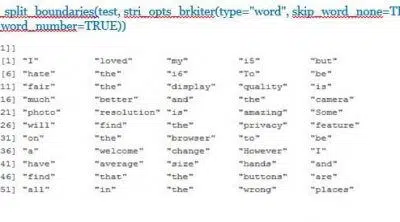Lean Management Tools: An Ultimate Overview For 2021

Introduction
Organizations of all sizes are constantly looking to make their processes more efficient in order to remain competitive. This is where lean management tools play a significant role. With the increased elimination of waste in each process and system, Lean manufacturing helps organizations to improve continuously.
Lean management tools allow a variety of manufacturers and organizations to streamline their production lines and services. These tools address different needs. They can vary from managing people to structuring work more efficiently.
Lean management tools can and are used in various industries including manufacturing, engineering, and finance. Lean management tools and techniques essentially eliminate any invaluable processes, which makes them relevant to any business looking to increase their efficiency.
Here is a lean management tools list that highlights the best of the lean principles and methodology.
1. 5S 1
Five S is mainly a management tool that is used in physical production operations. This tool aims to increase efficiency, maintain organisation, and reduce waste. It refers to a set of practices that establish order and purposefulness.
Similar to most Lean practices, the 5S method also began in Japan. The tool includes five terms, which are workplace practices that allow for lean production. The five terms are:
- Seiri: This principle refers to the separation of the needed from the unneeded items. These can include tools, parts, materials, and paperwork. The unneeded should be discarded.
- Seiton: Whatever remaining items are left must be arranged neatly. All items must have a place and every item must stay in its place.
- Seiso: The workplace must be kept clean and free from dirt, garbage, and dust.
- Seiketsu: The workplace must have established standards that must be adhered to. The best practices must be standardised through visual management.
- Shitsuke: Habits and behaviours must be established and implemented to ensure the established standards are maintained long-term.
The Five Ss in English are Sort, Straighten, Shine, Standardize, and Sustain.
A sixth S is added in certain lean practices. This is the ‘ 1’, which refers to:
Safety: Safety procedures must be established and practised at all times.
2. Value-Stream Mapping
Value-stream mapping is a lean visual management tool used to organize all the components needed to deliver the product or service. This tool helps analyse and streamline the entire process of production. It is used in a variety of industries including healthcare, finance, and manufacturing.
Value-stream mapping is used to identify the whole value stream and can determine where flow and process improvements are needed. A simple flow diagram of every step needed to bring a product from order to delivery is mapped to highlight any opportunities for improvement.
3. Kaizen and Kaizen Blitz
Kaizen is one of the oldest lean project management tools and refers to the continuous improvement of an entire value stream. It can also involve the improvement of an individual process with the goal of increasing value and minimizing waste.
Kaizen Blitz is also called Kaikaku in Japanese. It is the revolutionary and radical improvement of an operational value system. It involves quick changes or improvements as opposed to the step-by-step Kaizen.
4. Takt, Jidoka, Kanban
Takt time is the rate at which products must be made in a process in order to meet customer demand. In other words, it is the available production time divided by the customer demand. A takt image is used to create a visual understanding and awareness of takt time, particularly in production processes that are not part of the final assembly line. Upstream production cells and shared processes can benefit greatly from the use of takt images.
Jidoka was conceptualised under Toyota, and means “automation with human intelligence”. It continues to be one of the main pillars of the Toyota production system. This principle prevents defects from moving to the next phase of production and avoids the waste of making a series of defective items. Jidoka highlights the causes of any problems because the work stops immediately when a problem first occurs. This leads to improvements in the processes that build in quality by eliminating the root causes of defects.
A kanban is a signalling device that gives authorization and instructions for the production or withdrawal of items in a pull system. Kanban cards are the best-known and most common example of these signals. Kanban has two functions in a production operation – instruct processes to make products and instruct material handlers to move products.
5. Poka-yoke
Poka-yoke or error-proofing refers to methods that help operators avoid mistakes in their work that are caused by choosing the wrong part, leaving out a part, installing a part backward, and more errors of this nature.
6. SMED
SMED stands for Single Minute of Exchange Die, which is a process for changing over production equipment from one part number to another in as little time as possible. The goal is to have SMED in under ten minutes.
Conclusion
This brings us to the end of the discussion about lean management tools. Lean principles may have originated in manufacturing, but they are now an integral part of management across several industries as seen with the proliferation of lean management tools. They are based on the practice of continuous improvement, which is crucial for setting up a framework for an effective and efficient organization.
Want to know all relevant information about your future? Head to our website to check out the best and the latest information about various fields to build your knowledge and scope.






